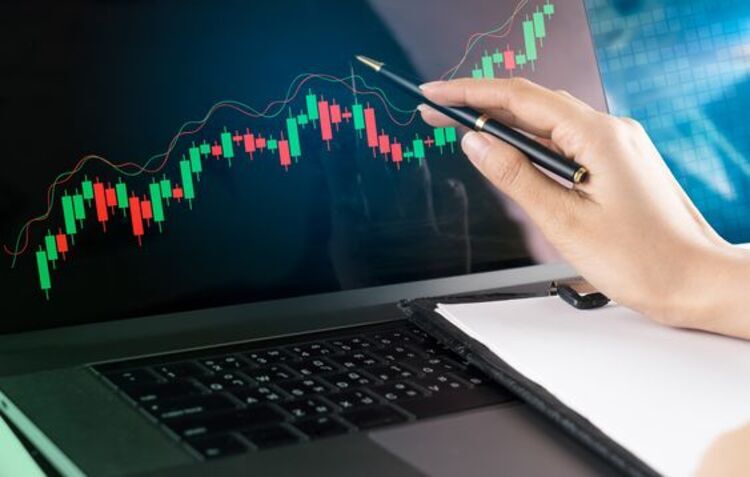What is trend trading in forex and how to identify it?
The FX market is the most actively traded financial market on the globe. Participants can use this to exchange one country’s money for another. This market is open for active trading 24 hours a day, seven days a week, and across various time zones. Investors trade for a currency pair that fluctuates in response to market conditions. When the exchange rate fluctuates, the trader gains or loses money. Traders rely on these fluctuations, often known as trends, to generate money.
What is trend trading?
The overall price direction of a market or asset can be simply stated as a trading trend. It is based on the idea of analyzing previous data and price movements to predict what will happen in the future.
It’s a technique that relies on technical indicators to identify a particular market movement or momentum, and it’s based on the idea that markets can be predicted. Trading trends are significant because they influence how successful or effective a trader is while making market moves. There are three types of trends in forex trading:-
- Uptrend
An uptrend, often known as a bullish trend, is a price movement that moves in an upward or upward direction. It usually has higher peaks and troughs that are continuous and regular than the preceding ones.
- Downtrend
Bullish and bearish tendencies serve opposing purposes. When the price movement on the Forex chart generates lower peaks and lower bottoms, the trend is negative. In this situation, a bearish trend line should be created across the chart’s swing tops, with the resulting trendline acting as price resistance. Following the negative trend, we predict the price will bounce in a bearish manner if there is a fresh price interaction with the trend line.
- Horizontal trend
The price moves without a distinct route of direction — either upwards or downwards – in what is known as a flat or sideways trend. These patterns are frequently chaotic, and they tend to emerge when supply and demand factors are almost equal.
Why trend trading is important?
Trends assist you in choosing the best course or direction. Detecting and comprehending trends allows you to trade with them rather than against them. You have a better chance of succeeding if you trade in the direction of the trend. When you understand the trend in forex trading, you can avoid buying or selling at the incorrect time.
However, you should be aware that the above-mentioned real-world patterns are not 100% true. In an ascending trend, the next high does not always have to be high. It might also be lower than the previous peak. These are outliers that you can’t avoid because reality differs from theory. In the actual world, you must accept a trend as true if it best matches its description.
How to identify trends in forex trading?
The trading trend strategy assists traders in recognizing forex trading trends as early as feasible, before any potential price reversal. For example, to minimize risk, all strategies should include a stop-loss mechanism. To aid traders in their hunt for trend trading chances, each system includes both technical indicators and price action methodologies.
Traders frequently combine many strategies, but there are three most used trend indicators:
- Moving average
A moving average is a basic computation that is used to smooth out price data over some time by continually establishing an average price. It is one of the most often used indicators.
It is a configurable indication, which means that when computing an average, a trader may choose the period range they want to use. The indicator will be more sensitive to price fluctuations of any sort if the period is shorter, whereas longer periods will have a less sensitive average.
- Relative strength index
By assessing the magnitude of recent price moves, this indicator is used to follow signs of bullish and bearish momentum. The relative strength index is usually shown as an oscillator, which is a line graph that oscillates between two extremes.
Its main purpose is to assist traders in predicting a market’s future direction and determining whether momentum is increasing or decelerating.
- Average Directional Index
This indicator may be used by traders to identify the strength of a trend in either direction, up or down.
Positive and negative directional indicators, as well as the trendline, are all momentum indicators that indicate trend direction in the average directional index. The intensity of the ADX line increases as the numbers become higher on a scale of zero to 100. Numbers between 25 and 100, for example, suggest a robust trend, whereas values below 25 indicate a weak trend.
The practice of detecting forex trading trends is crucial for every trader intending to invest in long or short market positions. It may appear complicated at first, but if a trader understands the fundamentals before diving into the details, it is rather easy to comprehend and apply.
It may be a crucial component of any trading strategy since it allows for the collecting of information about the future from the past and present. Furthermore, it allows traders to accurately detect and analyze trading patterns, hence lowering trading risk. There are several methods in forex trading, and every trader should be familiar with all of them to become a professional forex trader. To do so, you may enroll in the Capital Varsity Forex trading course, which will teach you all you need to know about forex trading techniques.

